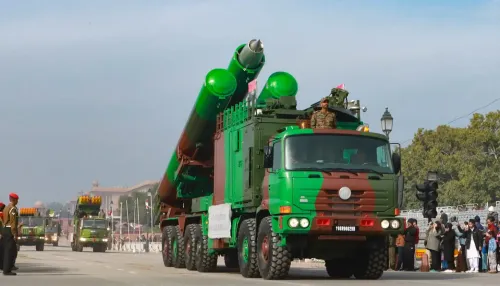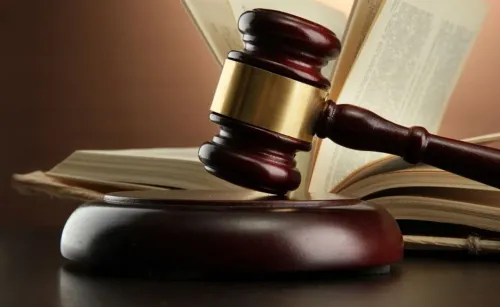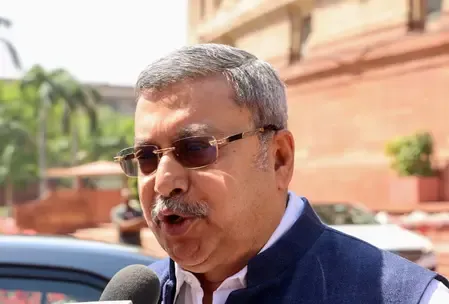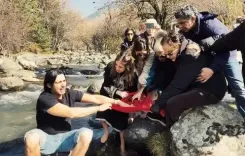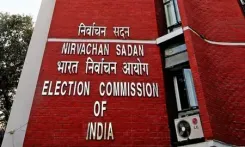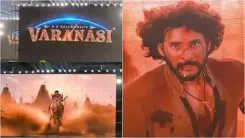How PM Modi's Gujarat Visit on 'Janjatiya Gaurav Diwas' Strengthens Ties with Tribal Communities?
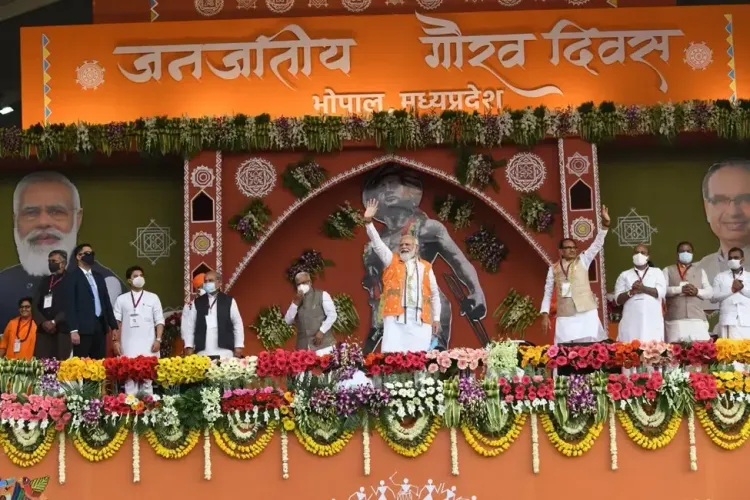
Synopsis
Key Takeaways
- PM Modi's commitment to tribal welfare spans decades.
- His initiatives focus on education, healthcare, and livelihood opportunities.
- He emphasizes dignity and self-reliance for tribal communities.
- The legacy of tribal empowerment continues to evolve.
- Tribal Pride Day celebrates cultural heritage and contributions.
Ahmedabad, Nov 15 (NationPress) As Prime Minister Narendra Modi arrived in Gujarat to commemorate Tribal Pride Day (known as Janjatiya Gaurav Diwas), the state's residents celebrated, acknowledging his commitment to tribal communities, which encompasses not just empathy but also dignity, opportunity, and a path toward self-reliance.
His enduring connection with Janjatiya families started well before he took office as Prime Minister, as highlighted by the Modi Archive on X, showcasing that his journey began in the modest tribal settlements of Gujarat rather than political arenas.
In his early years as a pracharak, Modi immersed himself in tribal life across Sabarkantha, Baroda, and Dang, sharing meals with families and understanding their challenges first-hand.
During the harsh droughts of the 1980s, he ensured that food and water reached isolated tribal villages, encouraging volunteers to prioritize meaningful actions over extravagant celebrations, such as funding the education of a tribal child.
His speech at a Vanvasi Kalyan Ashram event in Silvassa impressed then-President Zail Singh, showcasing his deep understanding of tribal heritage drawn from nearly 50 books.
Later, in his role as the BJP's State General Secretary, he mentored aspiring tribal leaders and introduced Gujarat's inaugural Tribal Haq Patra in 1995, focusing on housing, healthcare, and respect for indigenous communities.
These formative experiences reinforced his belief that tribal families required more than mere compassion, steering him towards ensuring dignity and self-reliance for every Janjatiya household.
As soon as he became Chief Minister, his commitment to tribal welfare was evident. After the catastrophic 2001 Kutch earthquake, he chose to spend his first Diwali in Chobari, a tribal village heavily impacted by the disaster, emphasizing his priorities.
He implemented lessons learned during his pracharak years into governance with the Vanbandhu Kalyan Yojana in 2007 and the Chief Minister's 10-Point Programme, which were among India's earliest mission-mode development frameworks to uplift tribal communities through education, healthcare, irrigation, and electricity access in remote areas with real-time tracking.
Recognizing the challenges tribal children faced in pursuing higher education, he recalled that there was no science school for Class 12 from Umargam to Ambaji. His administration established the first such schools, expanded vocational training, and initiated hostels and teacher training programs.
By the early 2000s, tribal schools across Gujarat began teaching sustainability practices, such as biogas production, water conservation, and solar energy. In a speech in Dahod, he stated, "We prioritized education because we value the tribal communities, their youth, and their future," noting that tribal students were even pursuing studies abroad, with some achieving careers as pilots.
For Modi, genuine empowerment meant pairing livelihood opportunities with ownership. His government supported bamboo-based livelihood initiatives for Kotwalia artisans, promoted integrated dairy growth, and introduced mechanized farming to alleviate the burdens of tribal farmers.
He enhanced the enforcement of the Forest Rights Act of 2006 and personally distributed land allotment letters in five districts of southern Gujarat, including Vansda, empowering families with cultivation rights over forest land.
He assured that tribals would no longer be exploited by intermediaries, stating that the state provided land, water, and electricity to farmers. He proclaimed, "Tribals have struggled for ownership rights to forest land for years. The state government gathered evidence using modern technology and reevaluated rejected applications. We approved 22,000 previously denied requests."
During his tenure in Gujarat, he asserted that connectivity was vital for dignity. His administration initiated a large-scale road construction program, ensuring all-weather access to even small villages with fewer than 250 inhabitants.
In conjunction with road infrastructure, he integrated remote tribal areas with economic hubs by enhancing irrigation, electricity supply, and drinking water systems throughout tribal regions.
The Modi Archive noted that he also prioritized healthcare early in his leadership. Programs like the Doodh Sanjivni Yojana in 2006–07 provided fortified milk to schoolchildren, while the Chiranjeevi Yojana of 2005 promoted safe motherhood, routine health check-ups, and essential surgeries.
Gujarat initiated early campaigns against sickle cell anaemia and leptospirosis, long before they were recognized in national health policies. This groundwork eventually developed into the National Sickle Cell Anaemia Elimination Mission in 2023, screening over six crore individuals.
"If the current generation is healthy, it ensures the health of their offspring," PM Modi remarked.
In 2011, Gujarat celebrated a historic moment when Ganpat Vasava, a legislator from a tribal background, was elected Speaker of the State Assembly. Modi hailed it as "a rare and unprecedented achievement" and commended lawmakers for establishing a high standard in parliamentary democracy. His vision of tribal empowerment extended beyond welfare, incorporating representation, dignity, leadership, and cultural pride.
In 2003, he inaugurated the Tribal Martyrs' Memorial at Palchitriya in Sabarkantha to honor 1,200 forest dwellers who fought against British forces in 1922. Revisiting the site in 2012, he referred to it as "a living homage to the unwavering spirit of those who resisted oppression."
As Prime Minister, he broadened this legacy with Tribal Freedom Fighter Museums and Janjatiya Gaurav Diwas, ensuring that the narratives of India’s earliest freedom fighters reach future generations.
He also played a crucial role in elevating Droupadi Murmu as India’s first tribal President, calling it a significant milestone for authentic social representation.
What originated in Gujarat as a series of initiatives in educational reform, water accessibility, nutritional programs, bamboo livelihoods, and microcredit projects has now transformed into a national framework for inclusive development.
The country’s flagship programs for tribal advancement today, such as PM-JANMAN, Dharti Aaba Abhiyan, the Sickle Cell Mission, Van Dhan, and Eklavya schools, adhere to the same model of targeted, measurable, and dignity-driven governance.
As the nation commemorates Janjatiya Gaurav Varsh and the 150th birth anniversary of Birsa Munda, the legacy of bravery and self-respect upheld by tribal icons remains at the forefront.
For many, Modi's policies embody a leader who transcends political calculations to connect with tribal communities, believing they deserve equal dignity as every other Indian.
His political journey—from a pracharak in Gujarat’s tribal villages to rebuilding lives following an earthquake, and ultimately maintaining the trust of millions of tribal families—continues to shape his governance approach across India.

